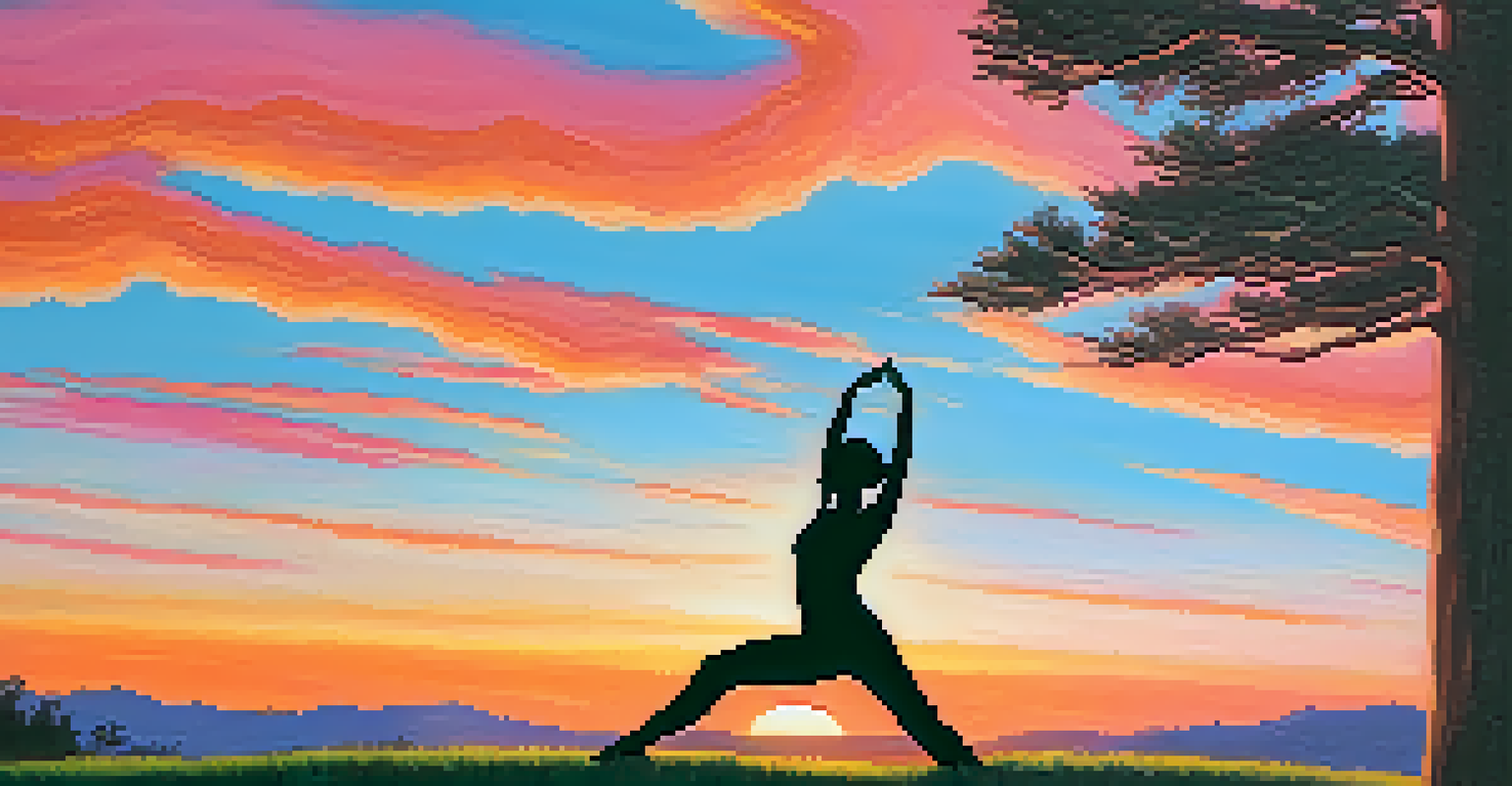Yoga Poses to Improve Balance and Core Stability

Understanding Balance and Core Stability in Yoga
Balance and core stability are essential components of yoga that enhance overall performance. They help us maintain our posture and prevent injuries, both on and off the mat. By improving these aspects, we can achieve a deeper connection to our bodies and improve our yoga practice.
Balance is not something you find, it's something you create.
Core stability refers to the ability of your body's core muscles to support and stabilize your spine and pelvis. A strong core allows for better balance, which is crucial for performing various yoga poses effectively. When we have good core stability, we can move with greater control and grace.
Incorporating specific yoga poses into your routine can significantly enhance both balance and core strength. These poses not only build physical strength but also promote mental focus, making your practice more rewarding.
Mountain Pose: The Foundation of Balance
Mountain Pose, or Tadasana, might seem simple, but it lays the groundwork for proper alignment and balance. Stand tall with your feet together, grounding your weight evenly on both feet. Engaging your core and lifting through your chest helps you find stability from the ground up.

This pose encourages you to focus on your breath and center yourself, which can be incredibly grounding. As you practice Mountain Pose, imagine yourself as a mountain—solid and unyielding. This visualization helps in building the mental strength needed for balance.
Core Stability Boosts Balance
A strong core enhances balance and control in yoga, allowing for more effective movement and pose execution.
Regular practice of Mountain Pose helps improve your posture and teaches your body how to distribute weight evenly. This foundational pose sets you up for more challenging balance poses later on.
Tree Pose: A Balancing Act for the Mind and Body
Tree Pose, or Vrksasana, is a fantastic way to challenge your balance while strengthening your legs and core. Start by standing tall and shifting your weight onto one leg. Place the sole of your opposite foot on your inner thigh or calf, avoiding the knee.
The mind is everything. What you think you become.
As you find your balance, bring your hands to your heart or stretch them overhead. Focus your gaze on a fixed point in front of you to enhance your stability. The key here is to remain calm and centered, allowing your body to adapt to the pose.
Practicing Tree Pose regularly can help improve your concentration and mental clarity. It's a beautiful reminder that balance is not just physical; it's also about finding harmony within yourself.
Warrior III: Building Core Strength and Stability
Warrior III, or Virabhadrasana III, is a more advanced pose that requires both balance and core stability. Begin in a standing position, then shift your weight onto one leg while extending the other leg back and parallel to the ground. Your torso should lean forward, creating a straight line from fingertips to toes.
Engaging your core is crucial here, as it helps maintain the pose and keeps your body aligned. It may take time to master Warrior III, so don’t hesitate to use a wall or a chair for support as you build strength.
Regular Practice is Essential
Incorporating balance poses into your routine consistently can significantly improve your stability and overall yoga performance.
As you become more comfortable, this pose will not only improve your balance but also enhance your confidence. It teaches you to trust your body and find stability even in challenging situations.
Boat Pose: Strengthening the Core for Better Balance
Boat Pose, or Navasana, is a fantastic core-strengthening posture that directly contributes to balance. Sitting on your mat, lean back slightly and lift your legs off the ground, forming a 'V' shape with your body. Your arms should extend forward, parallel to the floor.
This pose challenges your core muscles and requires focus to maintain balance. Engaging your abdominal muscles not only helps you hold the pose but also improves your overall stability in other asanas.
While Boat Pose can be demanding, it's an excellent way to build endurance and concentration. The more you practice, the stronger your core becomes, leading to better balance in your yoga journey.
Eagle Pose: Enhancing Focus and Flexibility
Eagle Pose, or Garudasana, is a unique balancing pose that combines strength, flexibility, and focus. Begin by standing on one leg and wrapping the opposite leg around the standing leg. At the same time, cross your arms in front of you, bringing your palms together.
This pose challenges not only your physical balance but also your mental focus. As you hold Eagle Pose, concentrate on your breath and strive to maintain a steady gaze, which helps center your mind.
Balance is Both Physical and Mental
Practicing balancing poses not only strengthens the body but also enhances mental focus and awareness.
Practicing Eagle Pose regularly can improve your coordination and help you develop a deeper awareness of your body's movements. It's a reminder that balance requires both physical and mental effort.
Half Moon Pose: A Dynamic Balancing Challenge
Half Moon Pose, or Ardha Chandrasana, is a dynamic pose that enhances both balance and flexibility. Start in a standing position, then hinge at your hip and lower one hand to the ground while lifting the opposite leg parallel to the floor. Your body should form a straight line from fingertips to toes.
This pose requires a strong core and focused energy to maintain balance. Keep your gaze on one spot and engage your core to help stabilize your body as you hold the position.

As you practice Half Moon Pose, you'll notice improvements in your overall balance and coordination. It's a fun and invigorating way to challenge yourself and explore the limits of your body.
Incorporating Balance Poses into Your Routine
To reap the benefits of these balance and core stability poses, consistency is key. Try to incorporate them into your yoga practice at least two to three times a week. Start with a few minutes dedicated to each pose, focusing on your breath and alignment.
As you become more comfortable, challenge yourself by holding the poses longer or trying variations. You can even create a mini-sequence that combines several poses for a complete balance workout.
Remember, yoga is a personal journey, and progress takes time. Celebrate your achievements, no matter how small, and enjoy the process of growing stronger and more balanced in your practice.